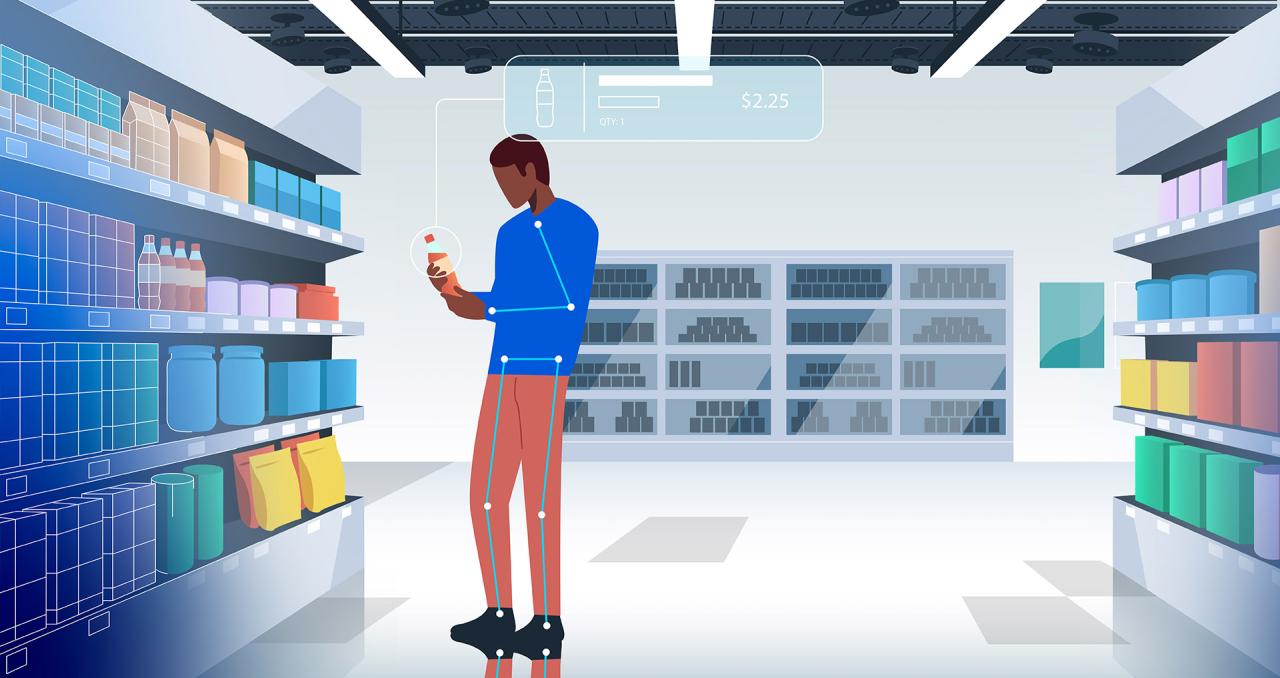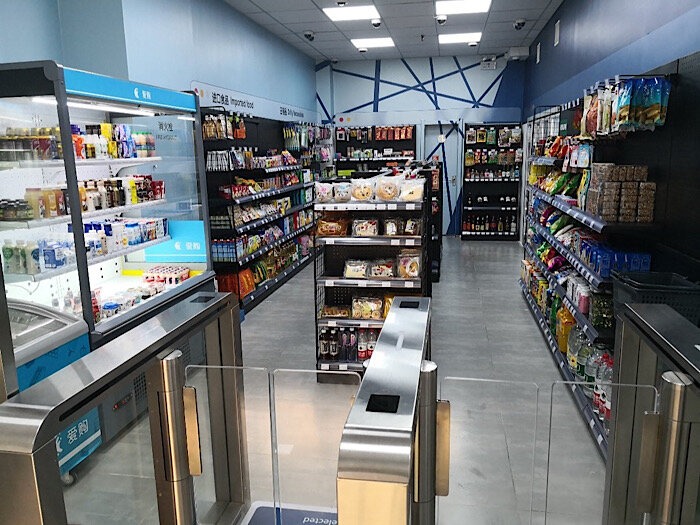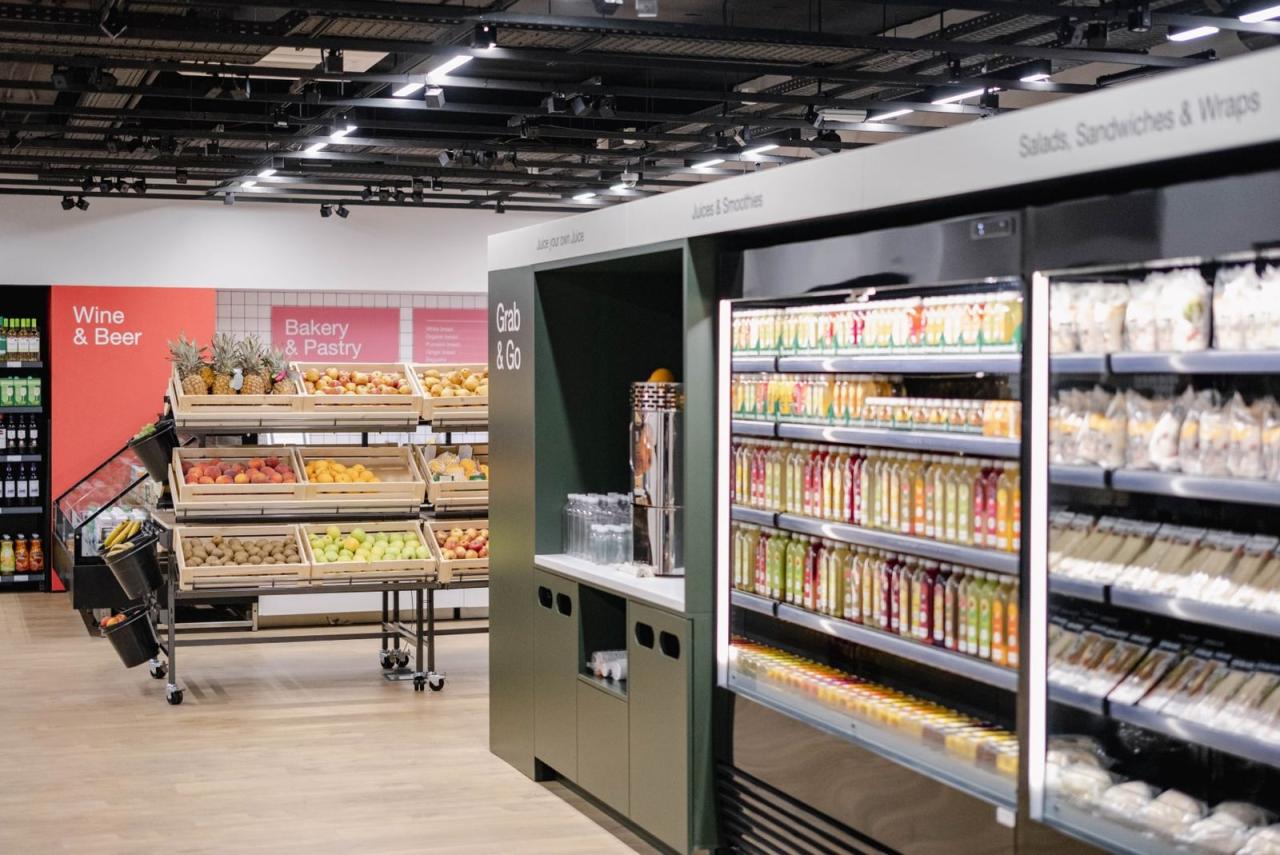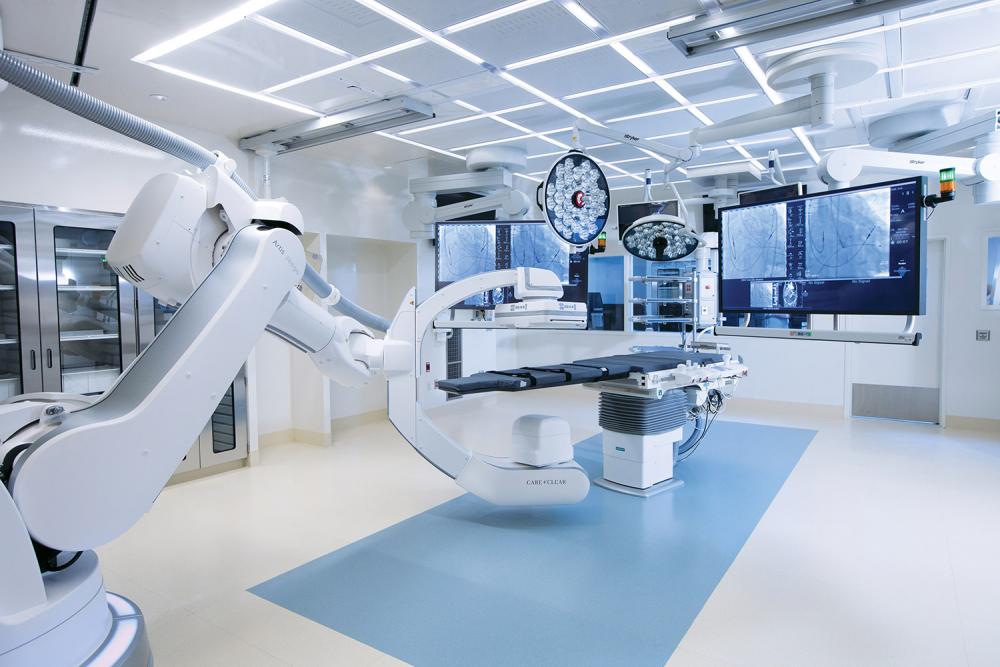Autonomous Store Technology: The Future of Retail
Autonomous store technology sets the stage for a retail revolution, offering shoppers a seamless and convenient experience while businesses gain operational efficiencies. This technology leverages cutting-edge advancements in computer vision, […]

Autonomous store technology sets the stage for a retail revolution, offering shoppers a seamless and convenient experience while businesses gain operational efficiencies. This technology leverages cutting-edge advancements in computer vision, artificial intelligence, and automation to create a futuristic shopping environment where customers can browse, select, and pay without human interaction.
Imagine walking into a store, grabbing the items you want, and simply walking out, with your payment automatically processed. This is the promise of autonomous store technology, and it’s rapidly becoming a reality. From Amazon Go to Alibaba’s Hema stores, these innovative spaces are transforming the retail landscape, offering a glimpse into the future of shopping.
Introduction to Autonomous Store Technology

Autonomous store technology, also known as cashierless stores, is revolutionizing the retail landscape by offering a seamless and convenient shopping experience. This technology eliminates the need for traditional checkout lines, allowing customers to simply grab what they need and walk out, with payment automatically processed through various methods like facial recognition or mobile apps.
Key Features of Autonomous Store Technology
Autonomous store technology encompasses a range of features that enable a frictionless shopping experience. These include:
- Computer Vision and Object Recognition: Advanced cameras and sensors track customers’ movements and identify the products they select. This data is then used to create a digital shopping cart.
- Artificial Intelligence (AI): AI algorithms analyze customer behavior and preferences to personalize promotions, provide recommendations, and optimize store operations.
- Sensor Networks: A network of sensors throughout the store detects customer entry and exit, monitors inventory levels, and identifies potential security threats.
- Secure Payment Systems: Secure payment methods, such as facial recognition or mobile app integration, are used to process transactions automatically.
- Real-time Analytics: Data collected from customer interactions and store operations is analyzed to gain insights into customer behavior, inventory management, and operational efficiency.
Evolution of Autonomous Store Technology
The concept of autonomous stores has been around for several years, with early prototypes emerging in the 2010s.
- Early Prototypes: Initial autonomous store prototypes relied on RFID tags attached to products, requiring customers to scan items before leaving the store. These systems were often cumbersome and limited in functionality.
- Advancements in Computer Vision and AI: The advent of advanced computer vision and AI technologies has significantly improved the accuracy and reliability of autonomous store systems. This has enabled the development of more sophisticated and user-friendly solutions.
- Emergence of Cashierless Stores: The rise of companies like Amazon Go and AiFi has brought autonomous store technology into the mainstream. These companies have successfully implemented cashierless stores, offering customers a convenient and frictionless shopping experience.
Examples of Companies Utilizing Autonomous Store Technology
Several companies are leading the way in the adoption of autonomous store technology:
- Amazon Go: Amazon Go is a pioneer in the field, operating a network of cashierless convenience stores across major cities. Customers can simply enter the store, grab their desired items, and walk out, with their accounts automatically charged.
- AiFi: AiFi is a leading provider of autonomous store solutions, offering technology to retailers of all sizes. Their platform enables retailers to transform existing stores into cashierless environments, reducing operational costs and enhancing the customer experience.
- Standard Cognition: Standard Cognition specializes in computer vision and AI solutions for autonomous stores. Their technology is designed to provide retailers with a comprehensive platform for managing and optimizing their cashierless operations.
- Zippin: Zippin is another notable player in the autonomous store market, providing retailers with a suite of solutions for creating frictionless shopping experiences. Their technology utilizes advanced computer vision and sensor networks to track customer movements and process payments.
Technology Components of Autonomous Stores
Autonomous stores rely on a sophisticated blend of technologies to deliver a seamless and efficient shopping experience. These technologies work together to enable self-service, minimize human intervention, and enhance security.
Computer Vision and Object Recognition
Computer vision and object recognition are essential for autonomous store operations. These technologies allow the store to “see” and understand what is happening within its environment.
- Object Detection: Cameras and sensors capture images and videos of shoppers and products. Advanced algorithms analyze these images to identify and track objects, such as products being picked up or placed back on shelves.
- Product Recognition: These algorithms can recognize specific products, even if they are partially obscured or in different orientations. This information is used to track inventory, monitor product placement, and identify potential theft.
- Customer Behavior Analysis: By analyzing customer movements and interactions with products, stores can gain insights into shopping patterns and preferences. This data can be used to optimize store layout, product placement, and marketing strategies.
Artificial Intelligence (AI) and Machine Learning
AI and machine learning play a crucial role in automating store operations and enhancing the customer experience.
- Inventory Management: AI algorithms can predict product demand, optimize stock levels, and automatically reorder products when needed. This reduces stockouts and ensures that shelves are always fully stocked.
- Personalized Recommendations: AI can analyze customer purchase history and preferences to provide personalized product recommendations. This can enhance the shopping experience and increase sales.
- Fraud Detection: AI algorithms can identify and prevent fraudulent transactions by analyzing purchase patterns and identifying suspicious behavior.
Sensors and Data Collection
Sensors are used to collect data about the store environment, customer behavior, and product interactions. This data is essential for optimizing store operations and improving the customer experience.
- Weight Sensors: These sensors are integrated into shelves and baskets to track the weight of products. This information can be used to verify that customers are paying for all items they take.
- RFID Tags: Radio Frequency Identification (RFID) tags are attached to products to track their location and movement within the store. This data can be used to monitor inventory, identify missing items, and optimize product placement.
- Motion Sensors: Motion sensors detect customer movement and can be used to trigger automated actions, such as lighting adjustments or product recommendations.
Automated Checkout Systems
Automated checkout systems eliminate the need for traditional cashier lines and provide a faster and more convenient checkout experience.
- Self-Checkout Kiosks: These kiosks allow customers to scan their own products and pay using various methods, such as credit cards, mobile wallets, or loyalty programs.
- Frictionless Checkout: Advanced technologies, such as computer vision and AI, enable frictionless checkout experiences where customers simply walk out of the store with their purchases, and the payment is automatically processed.
Security and Access Control
Autonomous stores require robust security measures to protect against theft and unauthorized access.
- Facial Recognition: Facial recognition technology can be used to identify and authenticate customers, allowing authorized personnel to access restricted areas.
- Surveillance Systems: Cameras and sensors monitor store activity and can detect suspicious behavior. This data can be used to deter theft and identify potential security threats.
- Access Control Systems: Doors and other entry points can be secured using access control systems that restrict entry to authorized individuals.
Challenges and Considerations for Autonomous Stores

While autonomous stores offer exciting possibilities, implementing this technology comes with its share of challenges and considerations. It’s crucial to understand these aspects before investing in autonomous store technology.
Ethical Implications, Autonomous store technology
The ethical implications of autonomous store technology are significant and require careful consideration.
- Privacy Concerns: Autonomous stores rely on various sensors and cameras to track customer movements and behavior. This raises concerns about privacy violation, as customers may feel uncomfortable being constantly monitored.
- Job Displacement: The automation of store operations through autonomous technology could lead to job displacement, raising concerns about unemployment and the impact on the workforce.
Technical Limitations
Current autonomous store technology faces several technical limitations, which are actively being addressed by researchers and developers.
- Object Recognition and Tracking: Accurately identifying and tracking objects, especially in crowded environments, remains a challenge. False positives or missed detections can lead to incorrect inventory management and customer frustration.
- Security and Fraud Prevention: Autonomous stores are susceptible to security breaches and fraud, as they rely on technology to prevent theft and unauthorized access. Implementing robust security measures is crucial to protect the store and its customers.
Cost and Return on Investment
The cost of implementing autonomous store technology can be substantial, encompassing hardware, software, and ongoing maintenance.
- Initial Investment: The initial investment for autonomous store technology can be high, including costs for sensors, cameras, software, and integration with existing systems.
- Return on Investment: The return on investment (ROI) for autonomous stores depends on factors such as store size, product types, and customer traffic. It’s important to carefully analyze potential cost savings and revenue increases before investing.
End of Discussion

As autonomous store technology continues to evolve, it promises to redefine the customer experience and reshape the retail industry. With advancements in AI and automation, we can expect even more sophisticated and personalized shopping experiences, where stores anticipate our needs and provide tailored recommendations. The future of retail is undeniably autonomous, and it’s a future that holds immense potential for both businesses and consumers.
Autonomous store technology is revolutionizing the retail landscape, offering a seamless and efficient shopping experience. While this technology focuses on convenience, it’s interesting to consider how it intersects with the realm of therapeutic technology , which aims to improve well-being.
Perhaps in the future, autonomous stores could be designed to incorporate calming elements, promoting a sense of peace and relaxation for shoppers.






